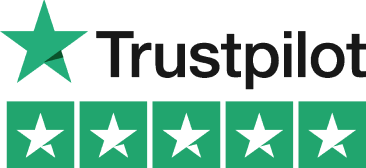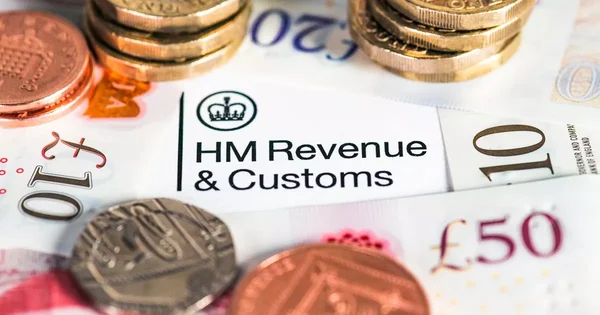Let’s Break This Down Together...
There’s a lot of talk about a “30 item rule” for eBay and Vinted, but here’s the truth, it doesn’t exist. What really matters is whether HMRC sees you as casually decluttering or actually trading.
This article walks you through what HMRC looks for, the £1,000 Trading Allowance, and what to do if your sales cross the line into taxable income. We’ll also cover record-keeping tips and bust some of the biggest myths out there.
By the end, you’ll know exactly where you stand and how to avoid tax headaches when selling online. It’s about clarity, confidence, and keeping things simple so you can focus on selling, not stressing. Let’s dive in.
What is the HMRC 30 item rule for Ebay and Vinted?
Let’s clear something up straight away there’s no official “30 item rule” in HMRC’s rulebook. This is a myth that’s spread across selling communities. From January 2025, new reporting requirements mean digital platforms must share sales data with HMRC due to legal obligations.
These new reporting requirements require platforms to share sales data, including seller identities and transaction details, when sellers exceed certain thresholds. HMRC is working alongside online platforms to ensure sellers are aware of their obligations and to improve transparency.
What actually matters is whether HMRC considers your online selling to be “trading” rather than just clearing out your wardrobe. The number of items you sell can be one indicator, but it’s not the only one. Activities such as delivering takeaways, providing paid-for services, or selling goods online may all be considered trading and could require tax reporting.
The real threshold you need to worry about is the £1,000 Trading Allowance. These reporting requirements do not change the underlying tax rules no new taxes are being introduced, but accurate record-keeping and understanding your obligations are more important than ever.
If your profits from selling on Ebay, Vinted, Depop or other platforms exceed this amount, you’ll need to register for Self Assessment and declare your income. Platforms like eBay and Vinted are required to share sales data with HMRC if sellers exceed certain thresholds.
How HMRC decides if you're a trader
HMRC uses several factors (called “badges of trade”) to determine if your online selling counts as trading. These include how often someone sells items (‘sells’), whether they buy goods to resell (‘buy goods’), frequency, profit motive, and organisation.
Selling items regularly throughout the year suggests trading, rather than a one-off clearout. Buying things specifically to sell them on (‘buy goods’) also looks like trading to HMRC. If you’re upcycling, repairing or improving items before selling, that suggests a business activity. Having a dedicated selling account with professional photos points to trading too.
The source of your items matters as well. Selling your own pre-loved clothes is different from buying wholesale stock to resell. HMRC generally does not consider selling unwanted items, such as personal possessions you no longer need, to be trading.
Time between purchase and sale can be telling. Quickly flipping items or making a profit offer suggests a profit-seeking motive rather than simply decluttering. Providing services online, such as selling services online, being a delivery driver, or offering a paid for service through digital platforms, can also be considered trading.
HMRC looks at whether you are providing services, offering a service, or earning income from services online, as these activities may require you to register for Self Assessment and pay tax if certain thresholds are met.

One Allowance, All Platforms: eBay, Vinted, Depop and Beyond
The Trading Allowance gives you £1,000 of tax-free trading income each year. This threshold applies to your total income or revenue from all trading activities, not just from a single platform. It covers all your trading platforms combined – so your Ebay, Vinted, Depop and Facebook Marketplace sales all count towards the same allowance and contribute to your total revenue.
If your total income from trading stays under this threshold, you don’t need to register for Self Assessment or complete a self assessment tax return or assessment tax return for your selling income. Even if you’re below the allowance, it’s still wise to keep basic records of your sales.
HMRC can ask to see evidence if they have questions. You can’t use this allowance against other types of income like your salary or rental income. I learned this the hard way last year when I sold my vintage handbag collection. Despite making just £1,200 profit, I had to register for Self Assessment because I’d exceeded the allowance. Exceeding the threshold means you may be liable for paying tax on your profits.
How to Prepare for MTD for Online Sellers
With Making Tax Digital (MTD) for Income Tax coming in 2026, online sellers should start moving to digital record-keeping now.
Using MTD-compatible tools like Pie tax lets you track your eBay, Vinted, and Depop income in real time, monitor your £1,000 Trading Allowance, and stay compliant when MTD becomes mandatory.
Getting set up early means a smoother, stress-free transition to digital tax reporting.


What to do if you exceed the Trading Allowance
If your online selling profits go over £1,000 in a tax year, you’ll need to start registering for Self Assessment. The deadline for registering is 5th October after the tax year you started trading. If you are required to register, you must complete the registration process on GOV.UK and understand your tax responsibilities.
Keep detailed records of all your sales and expenses related to your selling activity. This will make it much easier when completing your self assessment tax return, especially when deducting expenses from your income.
Submit your self assessment tax return (also known as an assessment tax return) by 31st January following the tax year end. Make sure to complete and submit your tax return and pay any tax due by the same deadline to avoid penalties.
You’ll have a choice – either claim the £1,000 allowance as a flat deduction, or deduct your actual business expenses if they’re higher when completing your tax return.

Record-keeping for online sellers
Good records will save you headaches later. Make sure you track your sales data from each website or platform you use, including dates, amounts, platform fees, and the money you receive from sales. If you exceed certain thresholds, platforms like eBay and Vinted may share your sales data and personal information with HMRC.
Keep receipts for items you bought to sell on. Don’t forget packaging materials, postage costs, and shipping supplies. Platform fees, listing fees, and payment processing charges are all deductible. Any travel costs directly related to your selling activity should be recorded too.
A portion of household bills can be claimed if you’re storing inventory at home. Photos of items can also be helpful evidence of what you’ve sold and their condition.
Common HMRC misconceptions for Ebay and Vinted sellers
Many people selling on websites like eBay and Vinted are simply selling personal items, such as unwanted clothes or gadgets. For most people selling personal items in this way, there is absolutely nothing new in terms of taxes or tax obligations there is no new tax for casual sellers. HM Revenue and Customs (HMRC) has made it clear that selling personal items occasionally does not make you liable for taxes, unless you are trading regularly or exceed certain thresholds.
Renting a holiday home or renting homes through platforms like Airbnb is also subject to tax reporting requirements, similar to other online income activities. If you’re regularly selling, HMRC might see it differently and may treat you as running a business or even as companies for tax purposes.
The myth that the “30 item rule” means you can sell 29 items without it being taxable persists. Remember, this ‘rule’ doesn’t officially exist. Some think making a loss on most items means nothing needs declaring. You still need to register if your turnover exceeds the relevant thresholds.
Platform fees are absolutely tax deductible – make sure you’re tracking them. Don’t assume HMRC won’t know about your online sales.

Final Thoughts
The “30 item rule” might not be official, but the principle behind it makes sense. Frequency and volume of sales matter when HMRC decides if you’re trading.
Online sellers using a digital platform now face new legal obligations and tax responsibilities. Focus on the £1,000 Trading Allowance as your key threshold for tax purposes this is equivalent to a similar amount in euros for EU sellers. If you’re getting close to this limit, start keeping better records.
Don’t panic if you realise you should have been declaring income. HMRC’s approach is usually more lenient if you come forward voluntarily. Angela MacDonald, HMRC's deputy chief executive officer and permanent secretary, has publicly stated that the new reporting rules are designed to clarify tax obligations for online sellers and provide reassurance about the process.
With online platforms now sharing more seller data with tax authorities, and new legal obligations in place, it’s never been more important to stay on top of your tax responsibilities.
Pie tax: Simplifying hmrc 30 item rule ebay vinted Tax
Understanding your Ebay and Vinted tax position shouldn't feel like solving a puzzle. The UK's first personal tax app Pie tax tracks your online selling income in real-time. Our simple dashboard separates your casual decluttering from actual trading income. This gives you clarity on your tax position throughout the year, with alerts when you approach that crucial £1,000 threshold.
We automatically capture and categorise your selling expenses, ensuring you don't miss out on valuable tax deductions. From platform fees to packaging costs, everything's tracked in one place. The app connects securely with popular selling platforms, pulling in your transaction data without manual input. When it comes to Self Assessment time, we'll have all your figures ready to go.
Want to see how it works? Explore the Pie tax app today to take the stress out of your online selling tax.

Quick and Easy Guide to Add Income & Expenses
Follow these steps to add income & expenses in the Pie app
Swipe right on any eligible transaction to add it as an income and expense you want to declare on your tax return, moving it to the ‘income’ & ‘expense’ tab.Step 1

Use the ‘Quick Add’ feature to manually enter any additional income & expenses not found in your bank transactions for your self-assessment.Step 2












